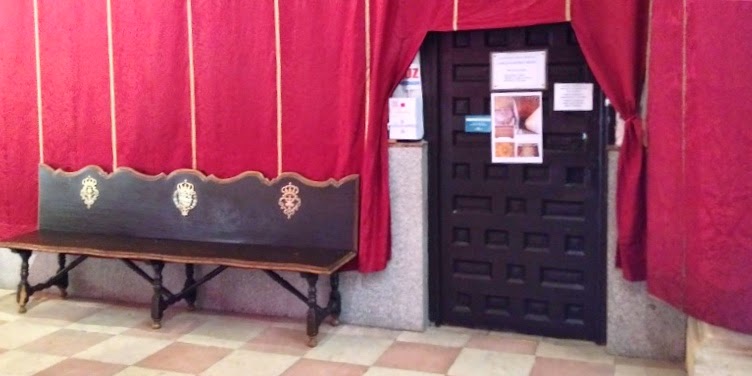
What?
A still-active monastery of nuns set up by royal decree by the King of Spain in 1455 and full of remarkable art.
Why visit?
Unlike many other Spanish monasteries that sold their treasures to museums in Madrid and elsewhere, the monastery of San Antonio El Real in Segovia remains almost exactly as it was when it was established 550 years ago. While the hallways are sparse, the ceilings are exquisitely designed, and rare, stunning art from around Europe awaits around nearly every corner.
Where?
About 30 minutes northwest of Madrid by high-speed train or one hour by bus. Map.
MOST PEOPLE COME to Segovia, a small city northwest of Madrid, to see either the remarkable, 2,000-year-old Roman aqueduct or the Alcazar, a stunning, cliff-edge castle. Segovia also boasts a charming central plaza, a fine cathedral, and incredible tapas. The city is a perfect day-trip for anyone passing through Madrid and is worth a couple of nights in its own right for travelers who like to linger.
But Segovia has a secret: the 15th century monastery of San Antonio El Real.
The signs that lead you there are bleak off-white boards with scratchy black text. A whispered arrow underlines the sentence, Abierto al turismo, or "Open to tourism," but the street where you find the entrance is quiet, unvisited.
Even once you have entered the monastery through an unattended, unmarked door, you may think there is nothing much to see. It looks like just a gaudy chapel in a forgotten medieval church. These are numerous in Spain. Before you turn around and leave, though, you have to look for a door framed by a red curtain. It will be locked, but you should ring the bell.
If you're lucky (or “blessed” as the nuns who live here might say), the person who comes to greet you will be a thin, smiling woman with short black hair. She only speaks Spanish, but even if you've just mastered a few phrases in the language, you can tell her, No hablo español, pero me gustaría ver el sitio. ¿Podrías enseñarmelo? ("I don't speak Spanish, but I would like to see the place. Could you show it to me?") She will smile and agree. The price of admission, whether you speak Spanish or not, is 2 euros.
This same woman will be your guide through the monastery. She is incredibly devout. To her, every geometric pattern represents the mysteries of divinity. Triangles, of course, sing the praises of the trinity. Squares demonstrate the perfection of heaven. While this medieval dogma might seem dry, her enthusiasm is so genuine and effusive, you will find yourself smiling back at her. She clearly loves this place.
And there is much to love. Your guide will lead you into the old cloisters and hallways flush with natural light. The ceilings go from a garden of swirling colors in one room to a starburst of gold-leaf in the next. While the theology is entirely Christian, the arches and doorways and windows charmingly combine Islamic and Catholic architecture.
Five-hundred-year-old artwork hangs in the corners of the halls, gifts from Dutch nobility to Spanish royalty. In one room, there are medieval music books with large archaic notes scrawled across the pages. The monastery is a storehouse of forgotten treasures and remains today nearly in the same condition it was in 500 years before.
The tour will take about an hour, perhaps a little longer if you have questions you want to ask. Then you will exit back to the unremarkable chapel you first entered, with the pleasure that you know a secret unknown to the crowds.
Getting there:
The monastery is near the corner of Avenue Padre Claret and Calle Coronel Rexach. From there, you walk about 100 meters down the quiet Calle San Antonio El Real. If you’re coming from Segovia’s famous aqueduct, you will follow the old Roman structure to the southeast, up a long slope of shallow stairs (not the steep stairs to the northwest).
Walk along the aqueduct for about ten or fifteen minutes (less if you walk briskly) until you reach the point where it goes underground. This is marked by a placard. On the opposite street corner, you will see a few flags and the letters SAR painted on a wall. Head in that direction and follow the arrows with the phrase, Abierto al turismo.
About the author:
About the author:
John Schellhase is an American writer based in Spain. He runs Venture Spain, a website devoted to exploring Spain’s best travel destinations as well as offering clear-headed analysis of the Spanish economy. Follow his journey on Twitter, Facebook, and Instagram.








Comments
Post a Comment
Have you been here? Or are you planning to go? Either way, we would love to hear about it.